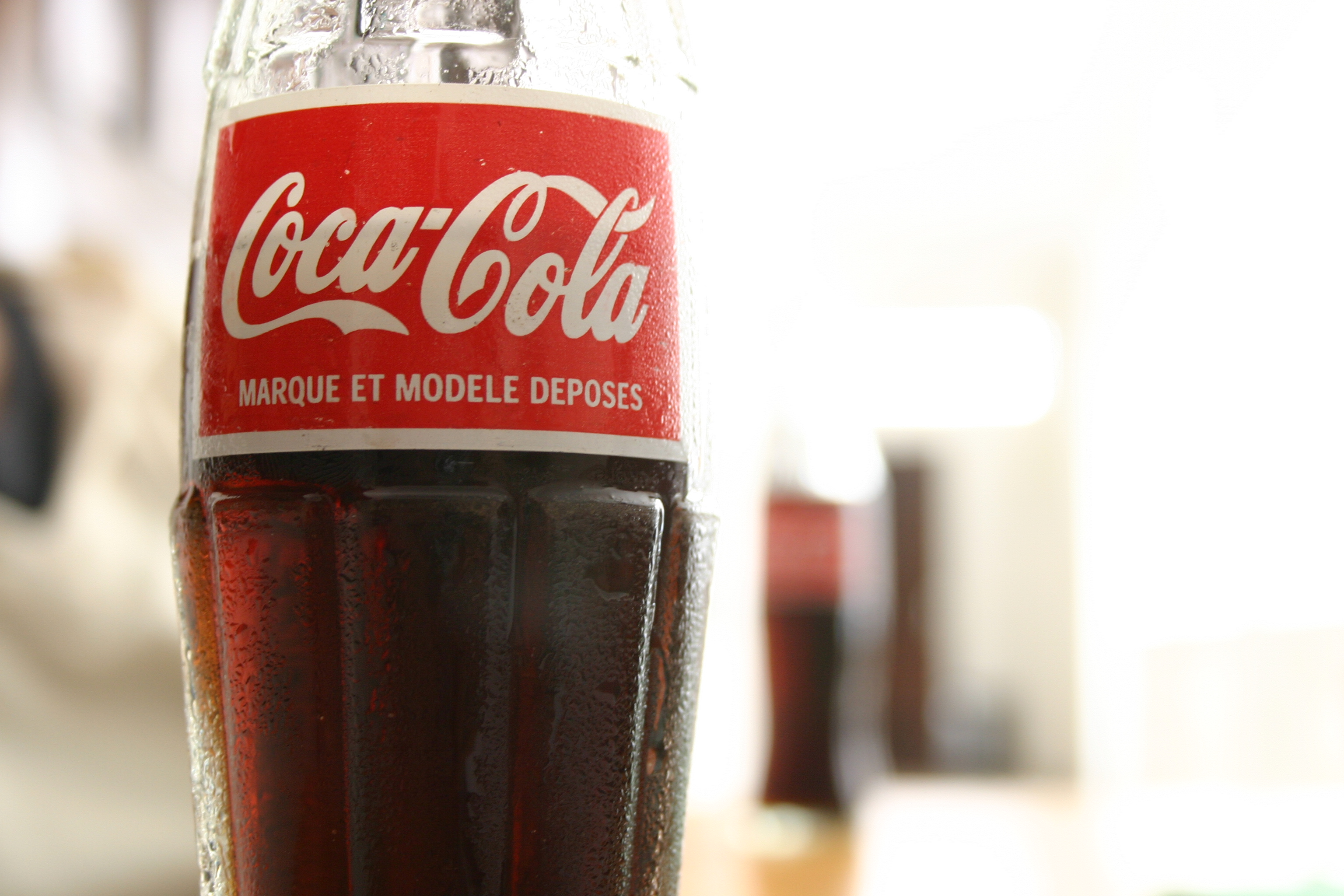Office workers—or those that regularly work at the computer
—are notorious soda drinkers.
Healthier options include tea, sparkling water, and even coffee, but from my experience, many people have a hard time sticking with that commitment forever. Sometimes, one just needs a Dr. Pepper. (Or Pepsi or Coke or whatever the choice may be.)
If you give in to the compulsion once a day or more—and you prefer colas to clear soft drinks—you may want to consider stepping over to the other side. Manufacturers use “caramel coloring” to make colas brown, and research has raised concerns about a potential cancer-causing byproduct in the ingredient.
Looking for 4-MEI
On February 10, 2014, Consumer Reports published an article revealing the results of their studies on 110 cans of soda from various popular brands. They got the products from stores in New York and California, and were looking for a chemical called 4-methylimidazole (4-MEI).
Some types of caramel coloring contain this chemical—an impurity created during the manufacturing process—which at high levels, has shown in animal studies to cause carcinogenic tumors. A National Toxicology Program (NTP) study in mice showed clear evidence of 4-MEI carcinogenic activity—more specifically, the mice got lung cancer—while a study in female rats found similar results.
“4-MEI is formed during the production of certain caramel coloring agents used in many food and drink products,” states the Office of Environmental Health and Hazard Assessment (OEHHA). Also used to make photographic chemicals, dyes, rubber products, and cleaning and agricultural products, 4-MEI was classified as “possibly carcinogenic to humans” in 2011 by the International Agency for Research on Cancer.
That same year, the chemical was placed on California’s Proposition 65 list of carcinogens, and manufacturers using it in foods and beverages were required by California law to provide warnings on any products containing more than 29 micrograms (mcg) per can or bottle.
Consumer Reports looked for products that contained more than that magic number—and unfortunately, found some.
Data Shows Higher-Than-Recommended Levels in Pepsi One
Data from tests conducted in April, September, and December 2013 were correlated and analyzed. Though the researchers refrain from recommending any particular brand, they did find that samples of Pepsi One and Malta Goya contained more than 29 mcg of 4-MEI. (Products sold in California did not contain the required warning labels.)
Early tests in New York found levels up around 174 mcg, but later tests found the level had gone down to 32 mcg. Researchers suggested this may mean that manufacturers are paying more attention to the issue.
Coke, Diet Coke, and Coke Zero tested at only 5 mcg of 4-MEI, levels considered to be much safer. Dr. Pepper was next in line, at around 10 mcg. Sprite, however, contained no 4-MEI at all. You can find a handy chart showing the results of all tests results here.
FDA Investigating Caramel Coloring
So far, the FDA has issued no warnings about caramel coloring. Agency spokeswoman Juli Putnam told CNN that the agency “has no reason” to suspect it puts Americans’ health at risk. Still, they have announced a new investigation into the ingredient, “to ensure that the use of caramel coloring in food continues to be safe.” According to them, it’s Class III and Class IV caramel coloring that potentially carry the byproduct 4-MEI.
Consumer Reports urged the FDA to conduct another review of the scientific literature and to step up labeling requirements for those products that contain 4-MEI, so consumers are aware of what they’re drinking. So far, consumers are in the dark, because even if a product says “caramel coloring” on the ingredient list, it may contain so-called Class I or Class II types, which do not contain 4-MEI.
The FDA states it’s currently reviewing “all available data on the safety of 4-MEI and is reassessing potential consumer exposure to 4-MEI from the use of Class III and Class IV caramel coloring in food products.” They note that some companies are already taking steps to reduce levels of the potentially dangerous chemical.
Low Risk, But May Deserve Caution
So far, no human studies have demonstrated a link between 4-MEI and cancer. The European Food Safety Authority has also reviewed studies on the ingredient and stated that levels used in the NTP studies far exceed typical consumer exposures.
Some people may be receiving higher levels of the chemical than expected, however, particularly if they are drinking many sodas a day. They may also be exposed through other items that contain caramel coloring, such as barbecue sauces, soups, imitation pancake syrup, gravy, and canned mushrooms, just to name a few. Consumer Reports notes, after all, that caramel coloring is the single most widely used coloring in the world.
Should you consider swapping your cola for a clear alternative? If you find yourself downing several cans a day, you may want to think about it. Then again, if you’re drinking that much, you may also be exposed to high levels of high fructose corn syrup or artificial sweeteners—neither of which is good for you.
Cup of tea, anyone?
Do you have a bad soda habit? Will you change to clear sodas? Please share your thoughts.

